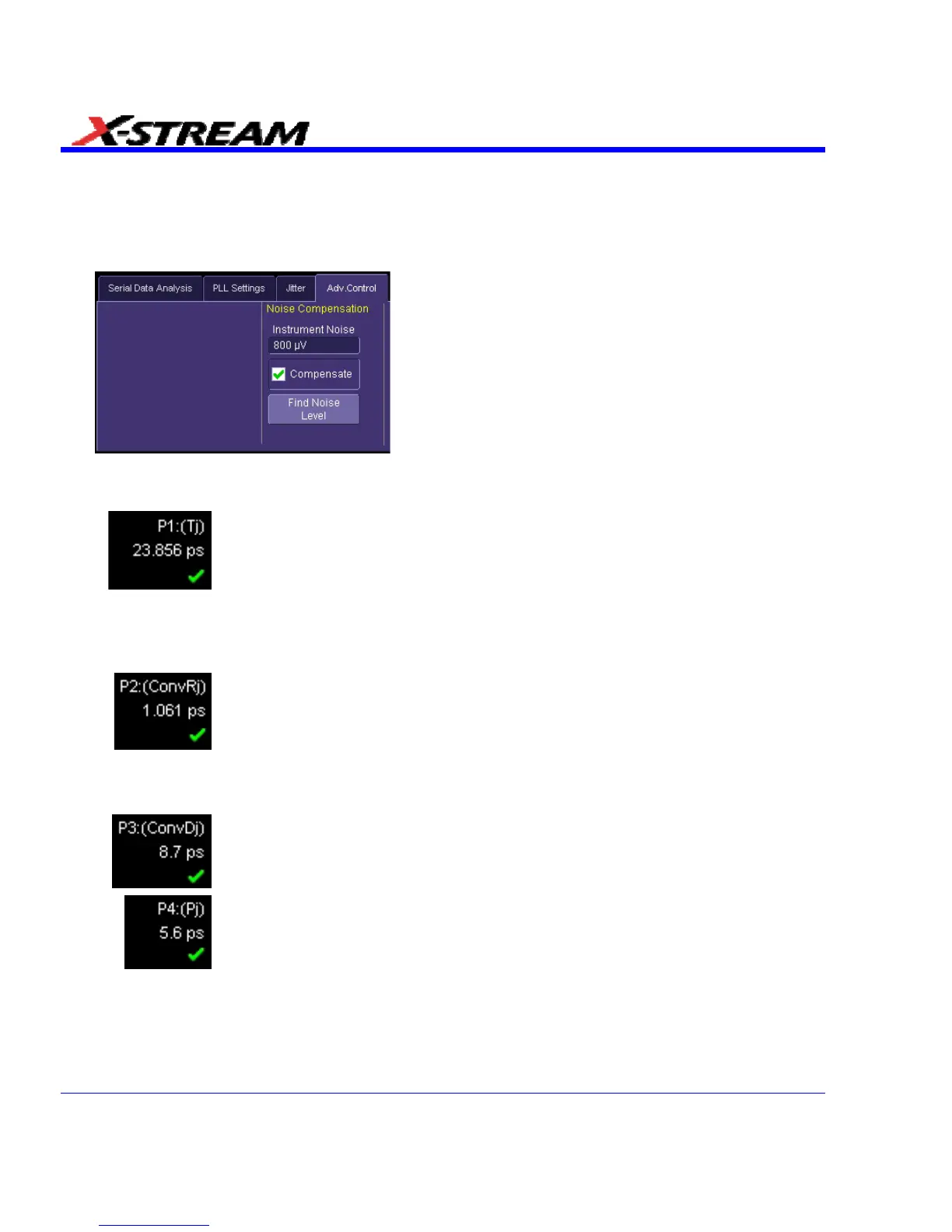4. Touch the Compensate checkbox to enable noise compensation, then the Find Noise Level
button. The value displayed under "Instrument Noise" is for the active channel at the current
volts/div setting. If you change channels or volts/div, press the Find Noise Level button
again:
Jitter Measurements
Tj Total jitter at a specific BER. The value is determined by the width of the
curve expressing the confidence limits of the extrapolated TIE histogram. The
value represents the expected range of values observed for a number of
observed measurements equal to 1/BER. The Tj parameter is accumulated
over all acquisitions since the start of the measurement or the last clear
sweeps operation. The total population of the TIE histogram is indicated in
the waveform descriptor box for the bathtub curve and Htie (the TIE
histogram).
Rj Random jitter is obtained indirectly by first determining deterministic jitter
through various direct analyses of the TIE trend. Once all of Dj is found, the
Rj value is deduced from the equation Rj = (Tj(BER) - Dj)/ Tj
(1-sigma)
(BER),
where the value for BER is typically 10e-12 (i.e., Rj is not a function, but a
single value). The bit error rate is selected in the @BER (pow 10) control in
the jitter menu. Rj is expressed in terms of an rms value, whereas Tj and Dj
are expressed as peak-to-peak values.
Dj Deterministic jitter is the peak-to-peak non-random part of the total jitter.
This parameter is the sum of the measured peak-to-peak values of periodic
jitter (Pj) and data dependent jitter (DDj). The DDj includes the effects of both
inter symbol interference and duty cycle distortion.
Pj Peak-to-peak magnitude of the periodic components of the TIE trend. It is
measured by analyzing peaks in the Fourier transform of the trend of the time
interval error. It is necessary to specify the pattern repetition length (if there is
one) so that spectral lines harmonically related to this pattern rate do not
contribute to the estimate of Pj, since the spectral energy associated with
data pattern-related spectral components is included in the DDj
measurement. The total periodic jitter is the complex sum of the spectral
components listed in the table under the Pj breakdown tab.
332 SDA-OM-E Rev H

